
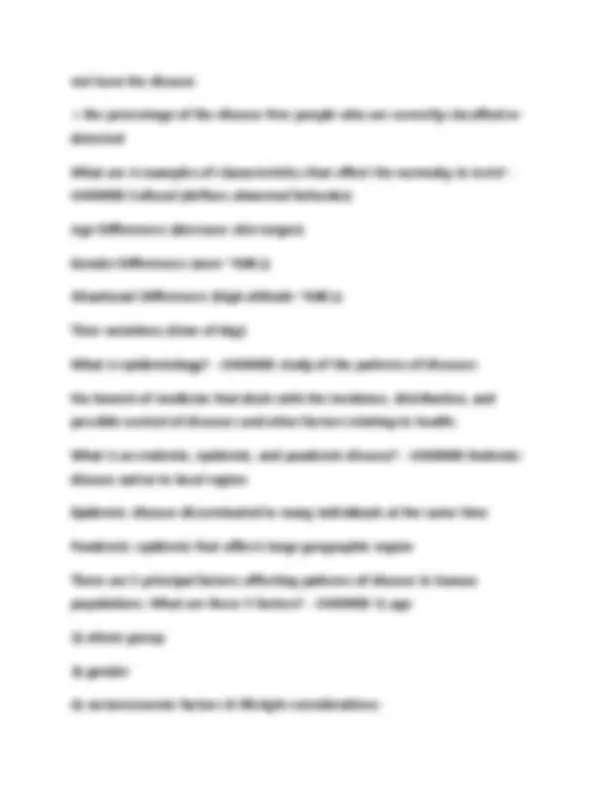
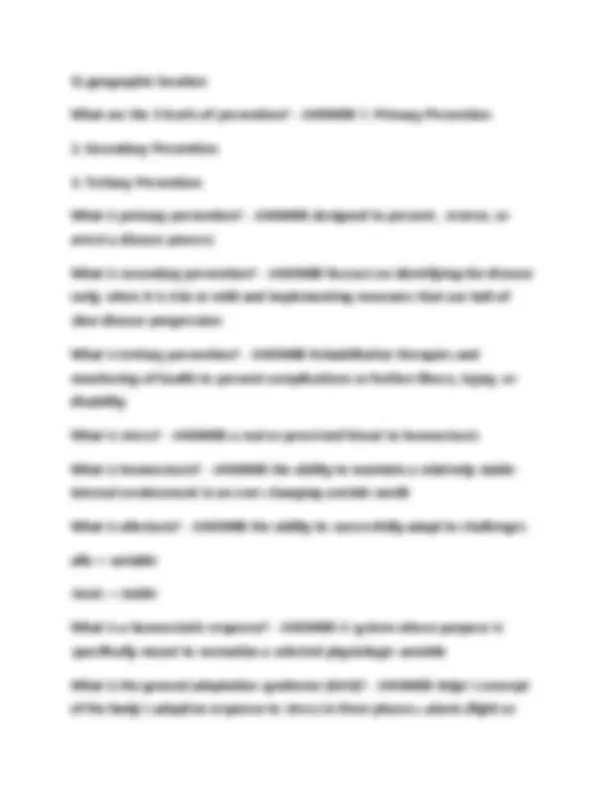
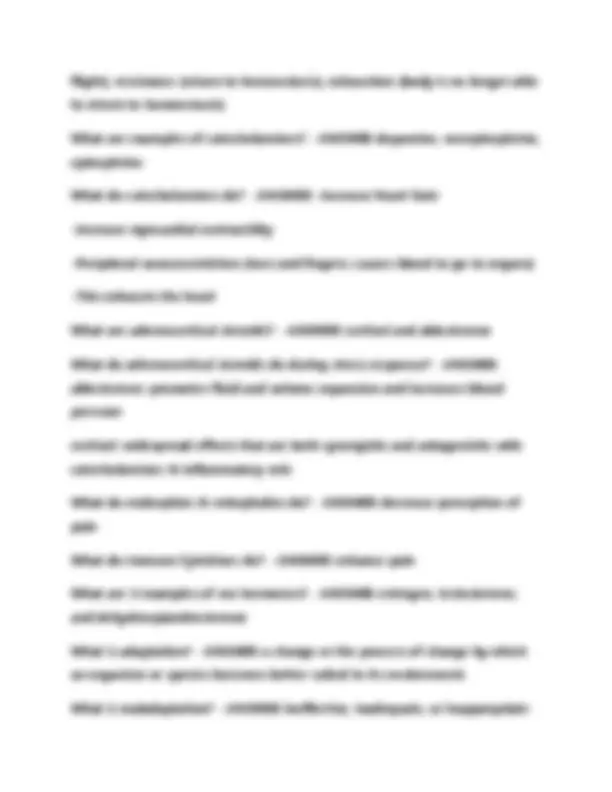
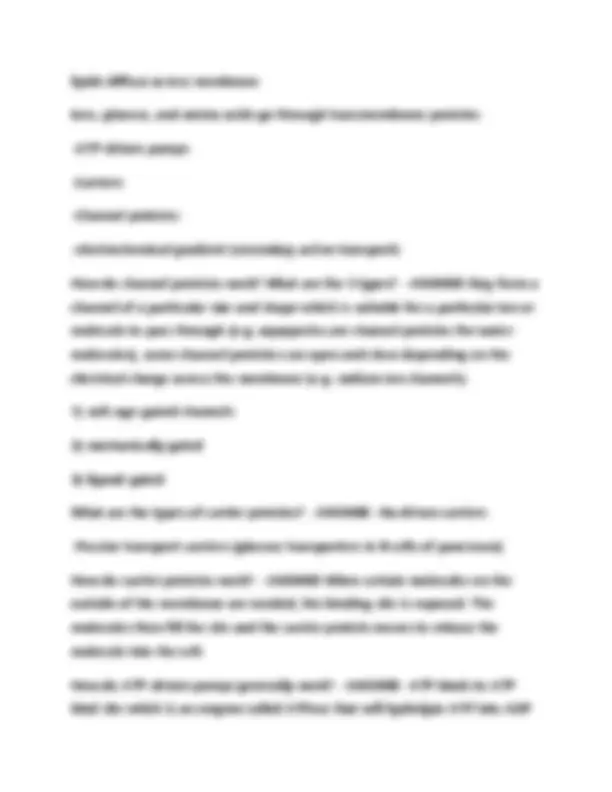
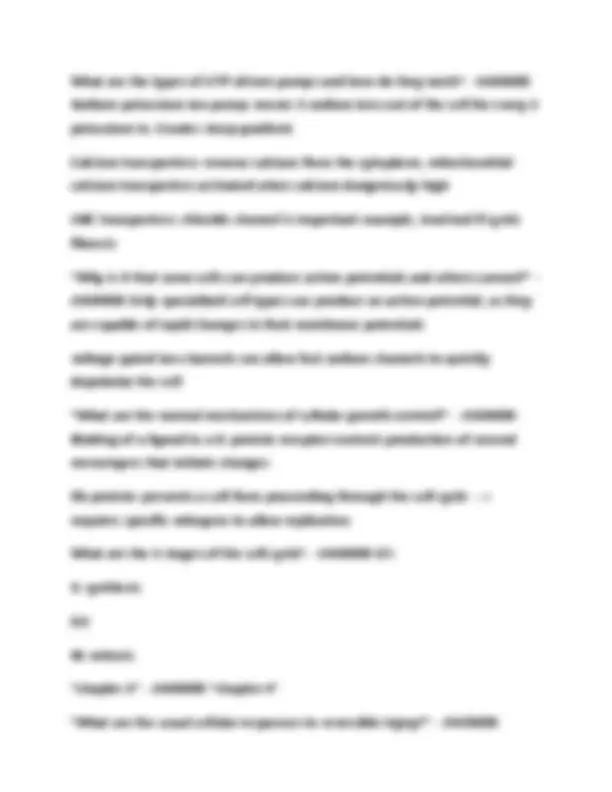
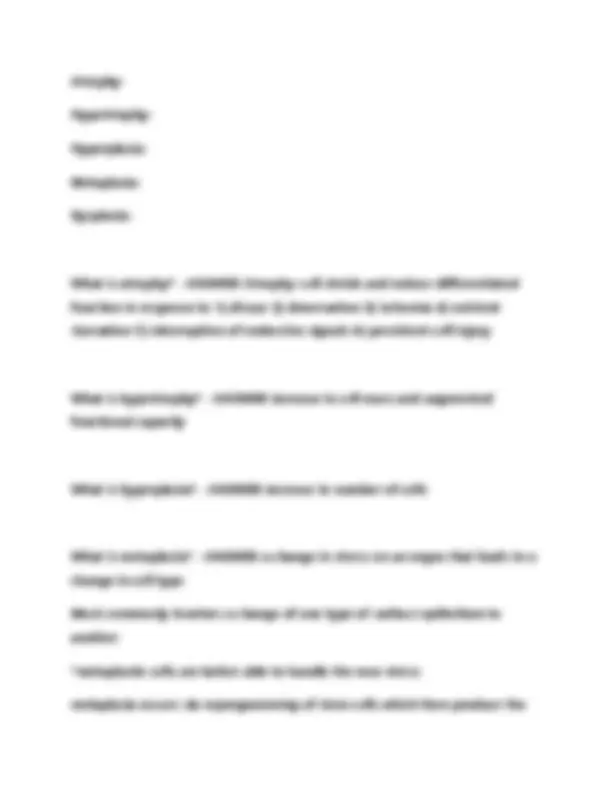
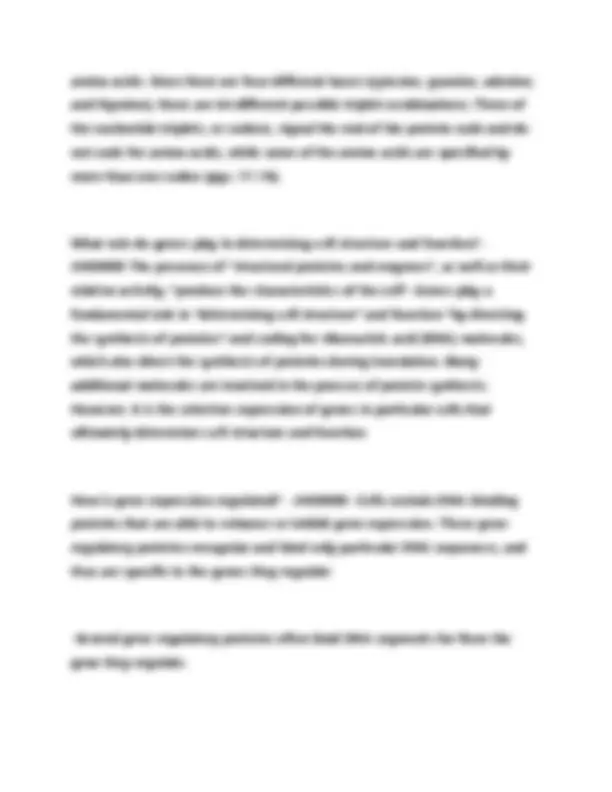
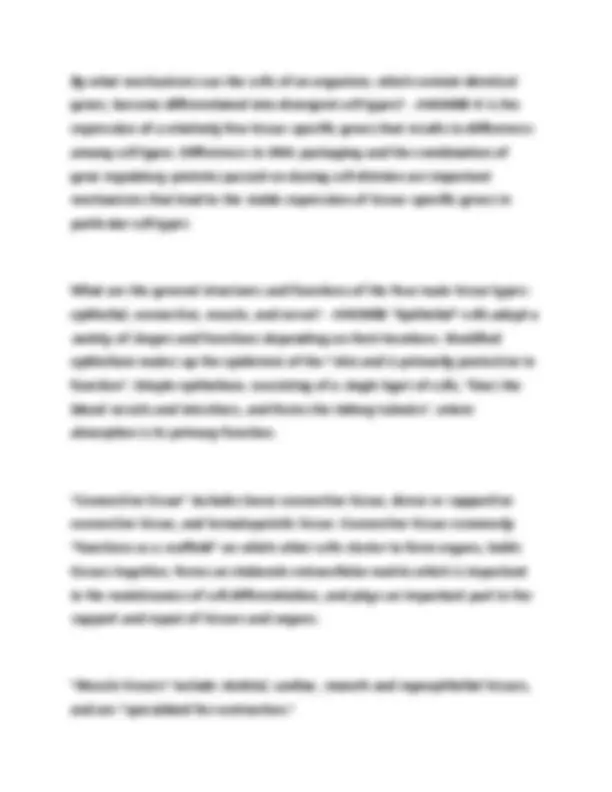

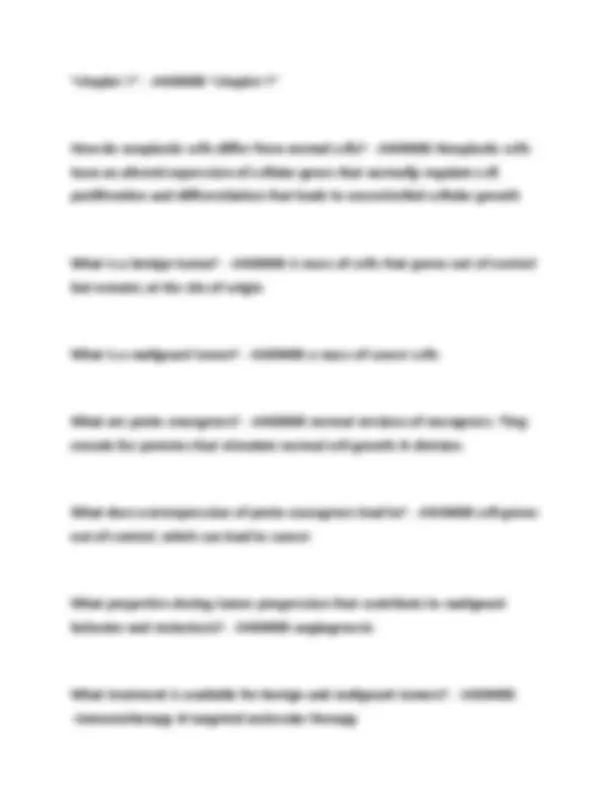
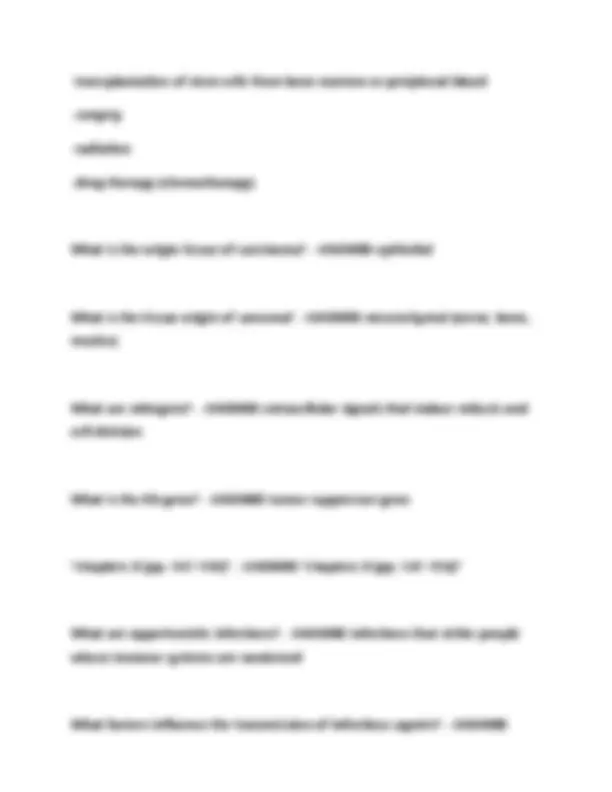
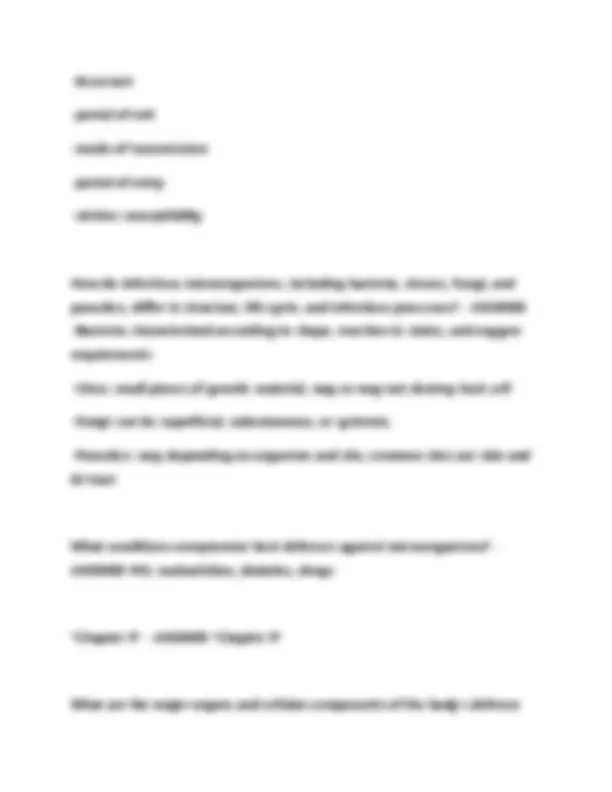
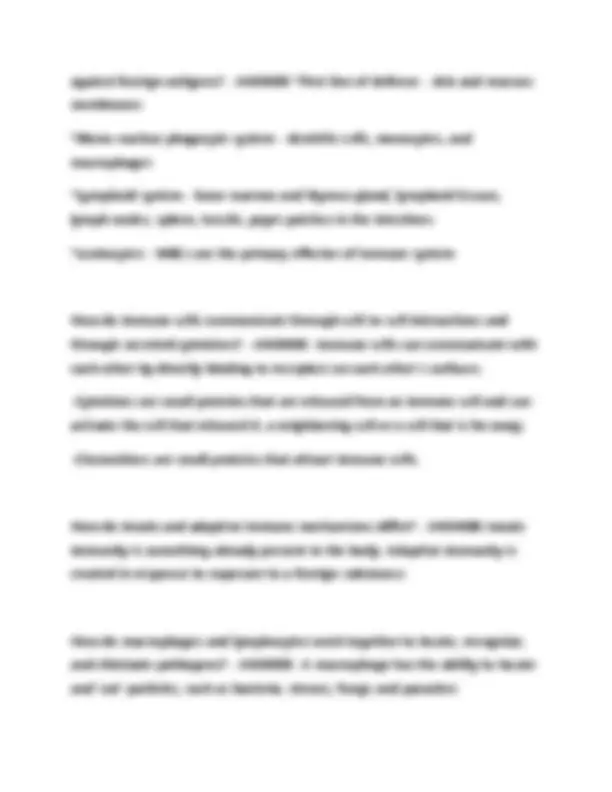
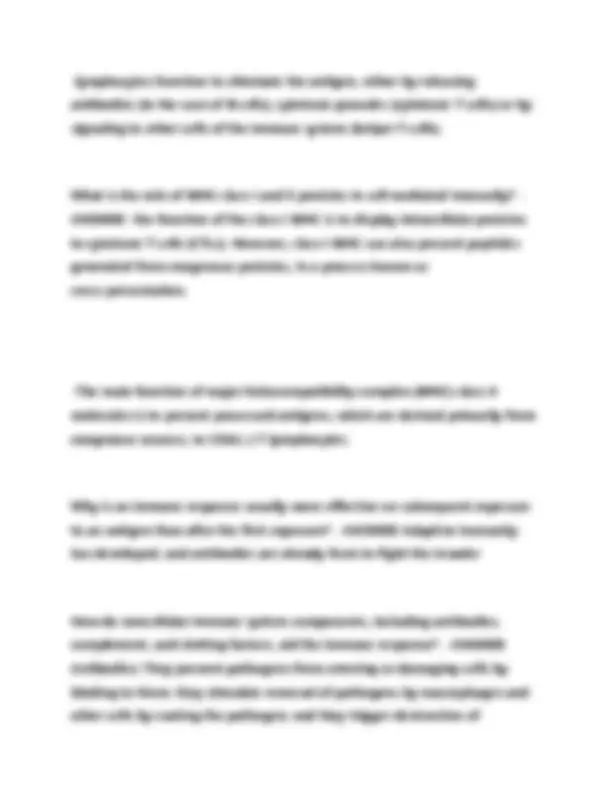
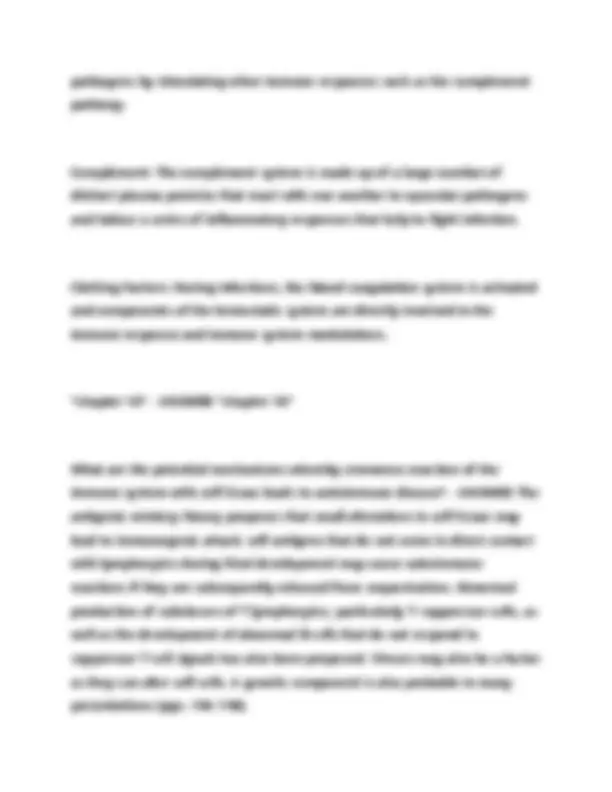
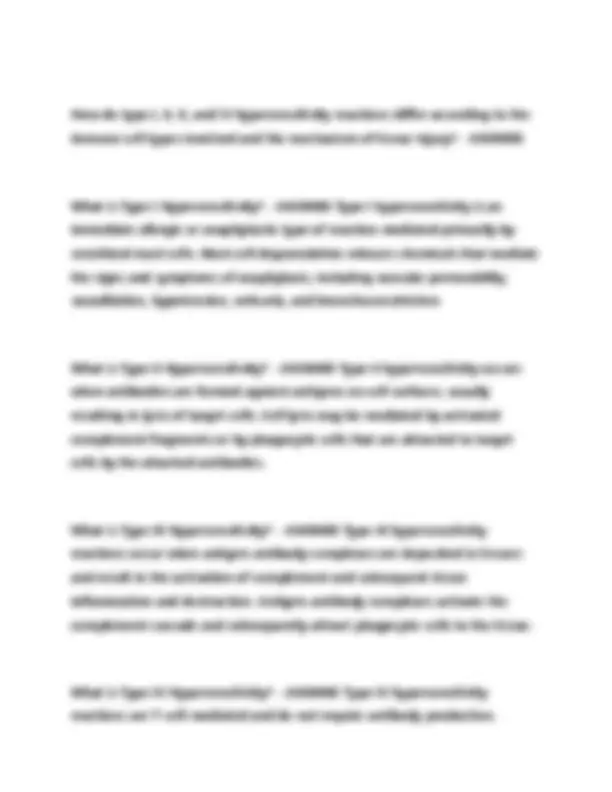
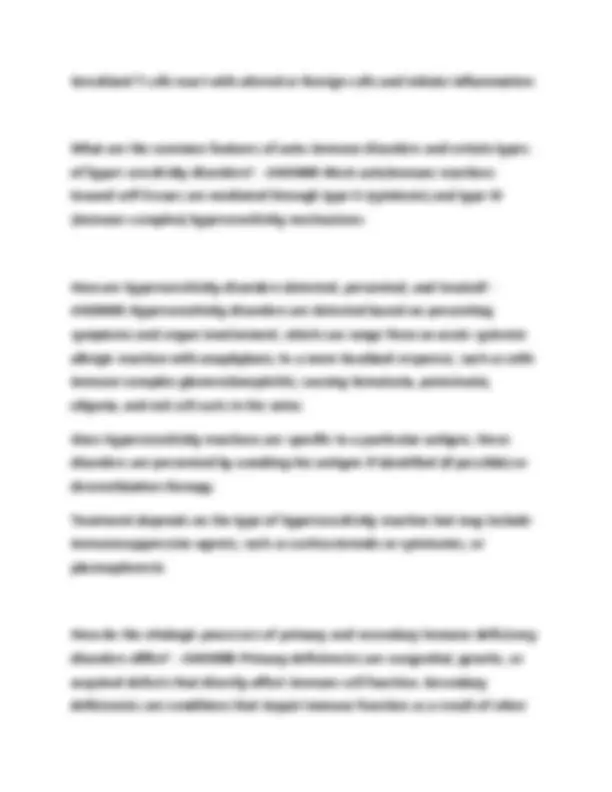
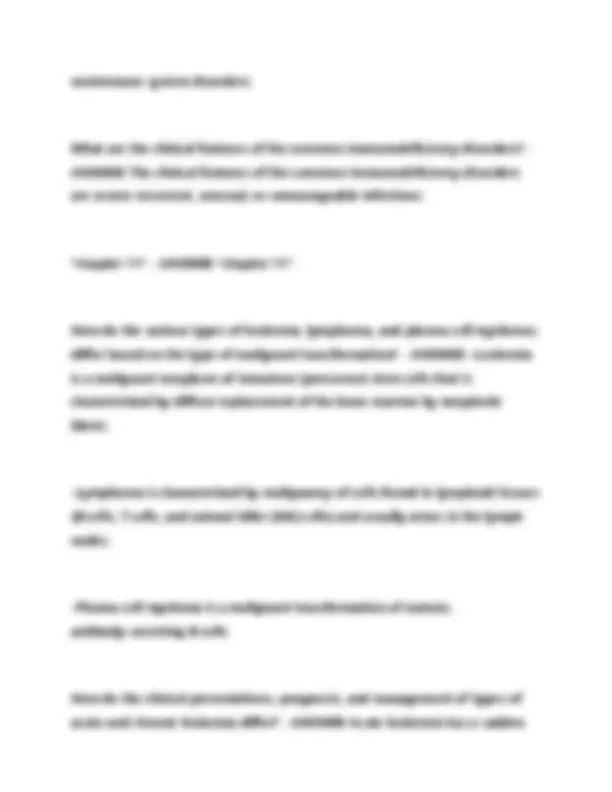

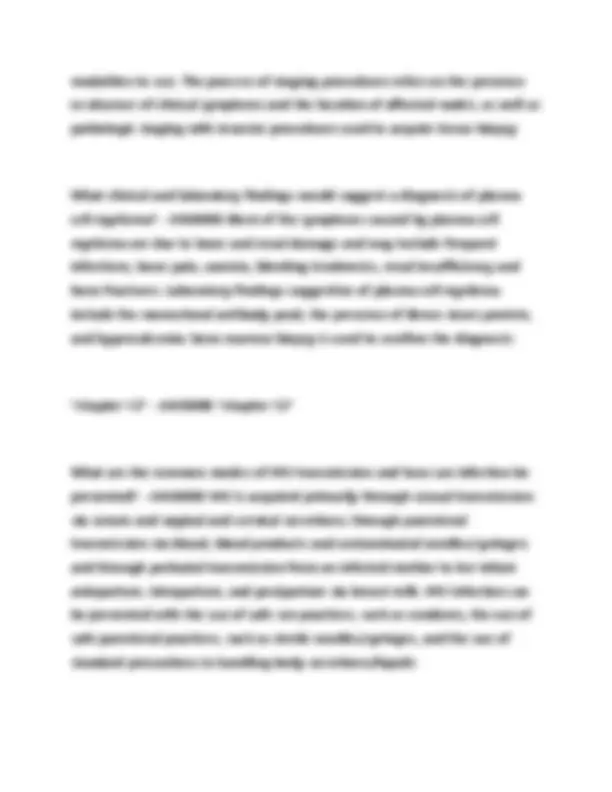
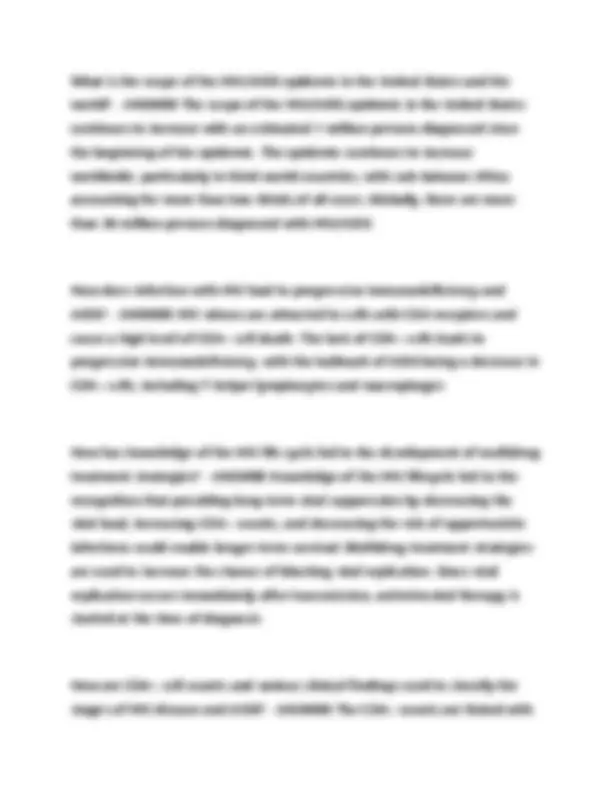
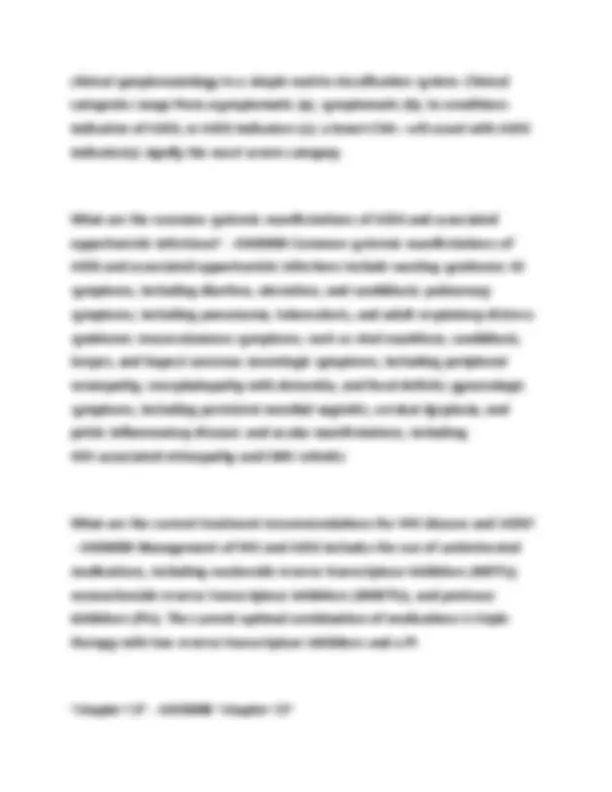
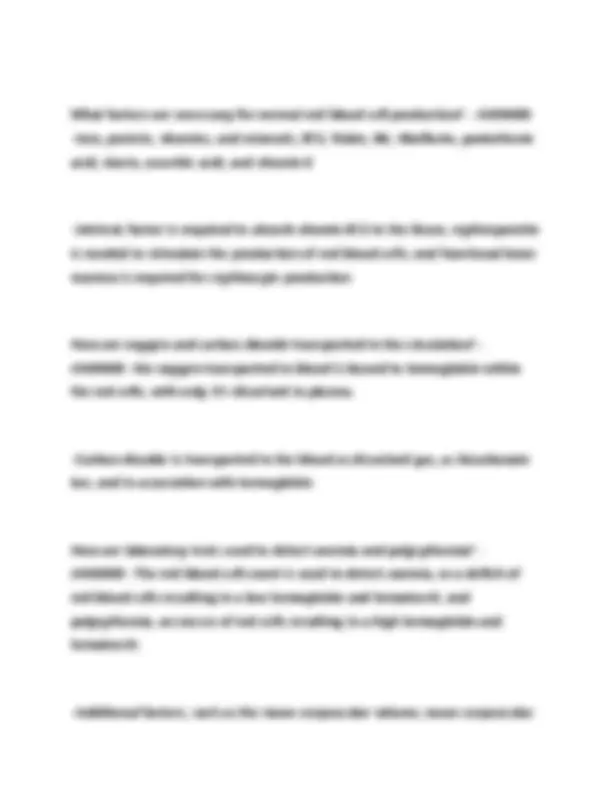
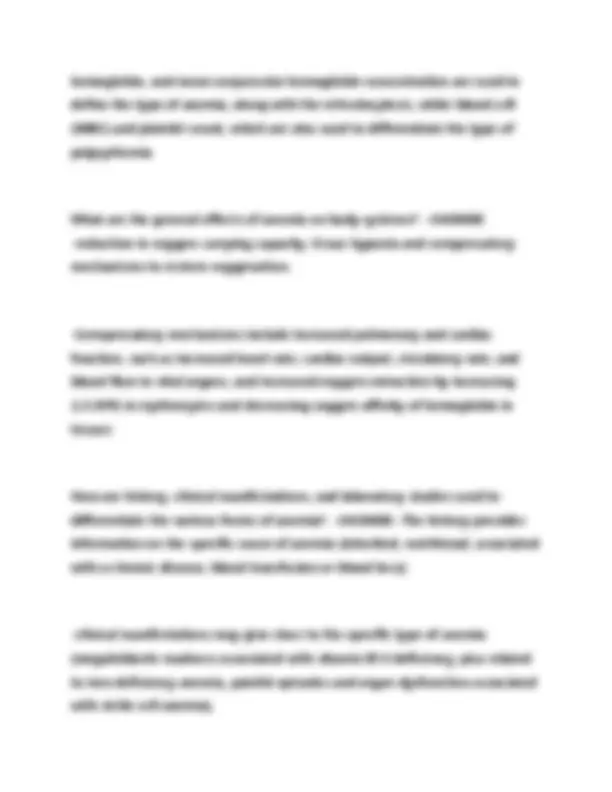
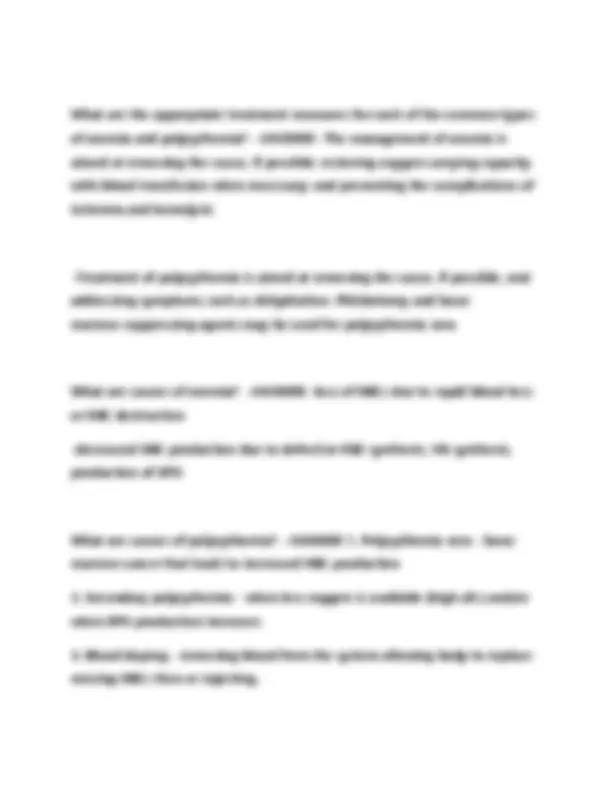
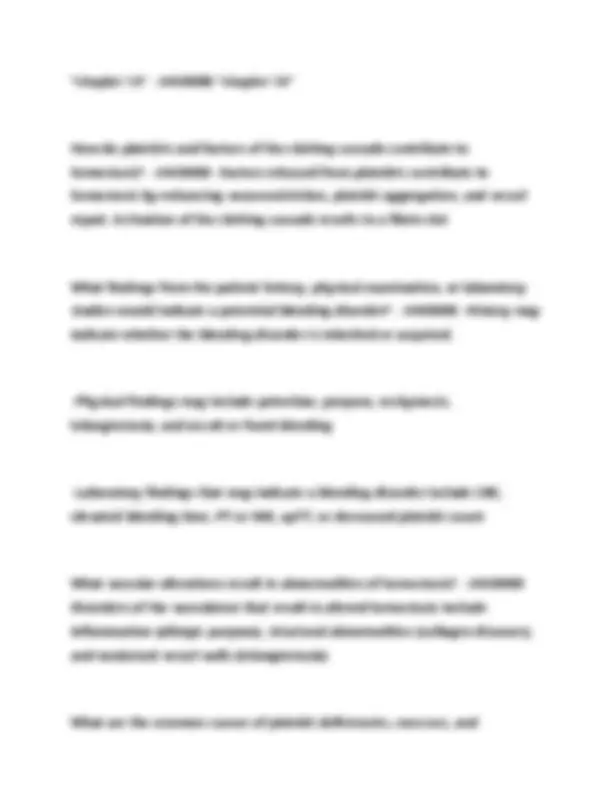
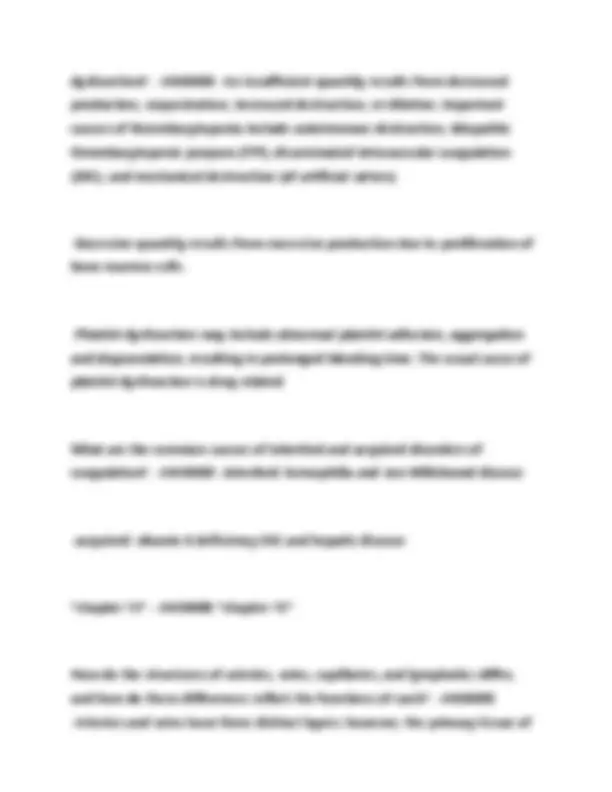
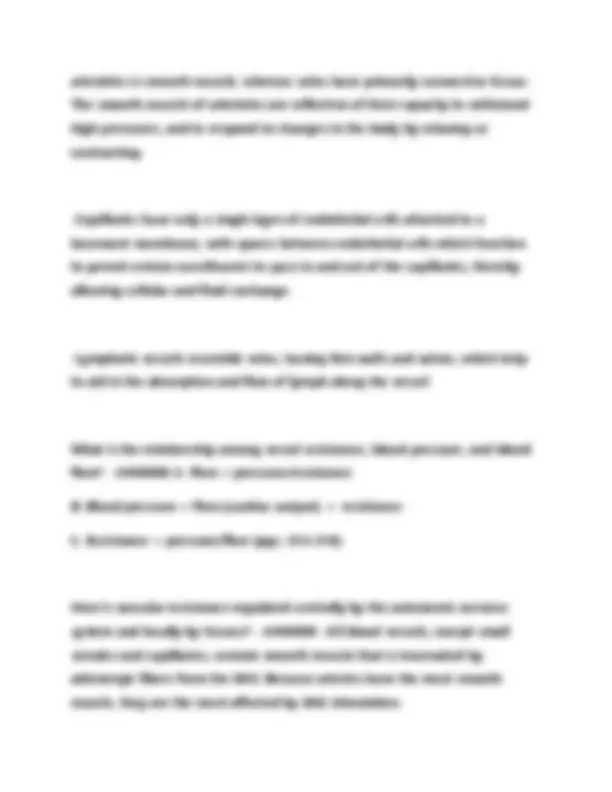
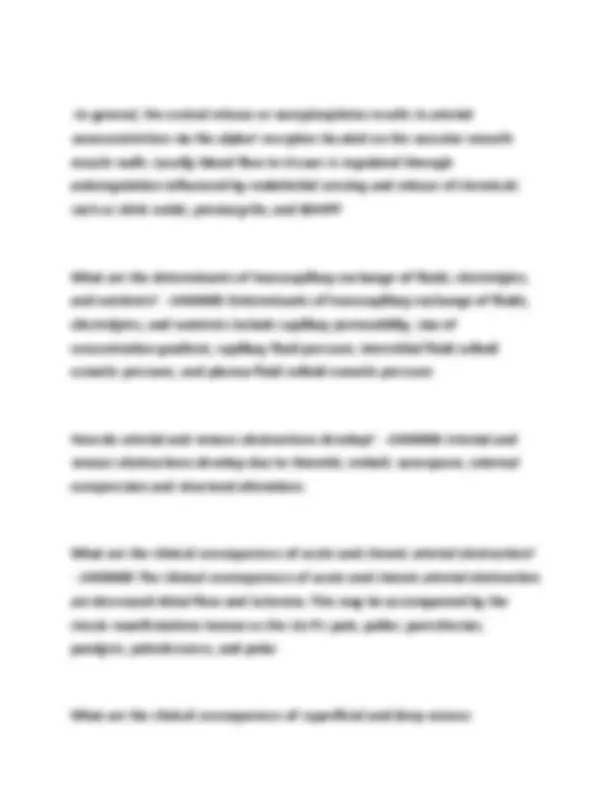
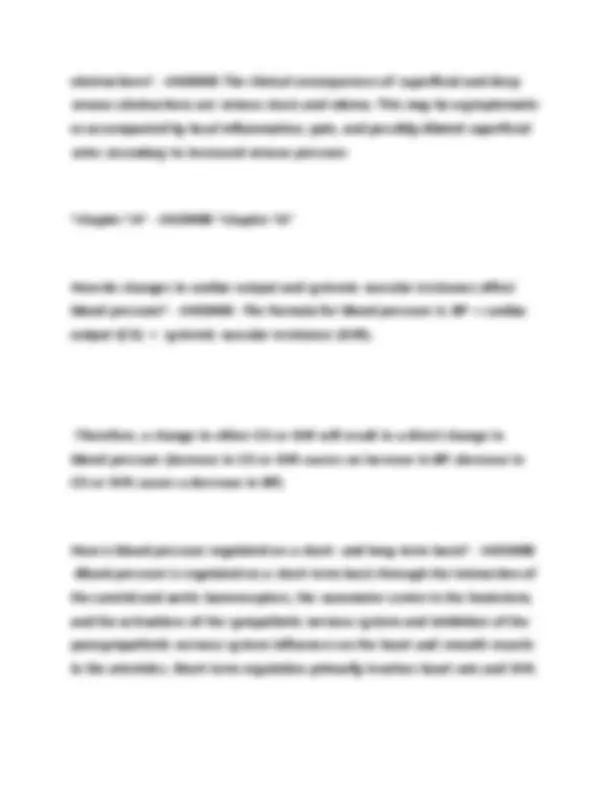
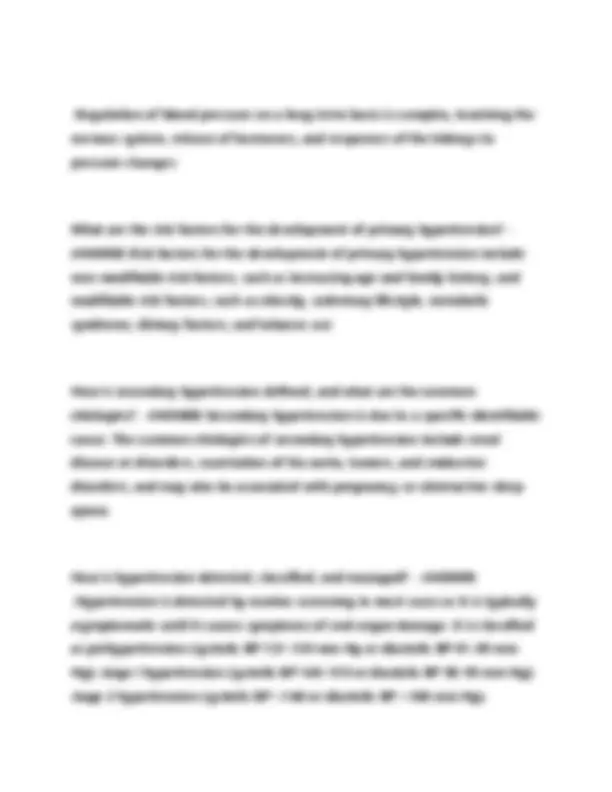
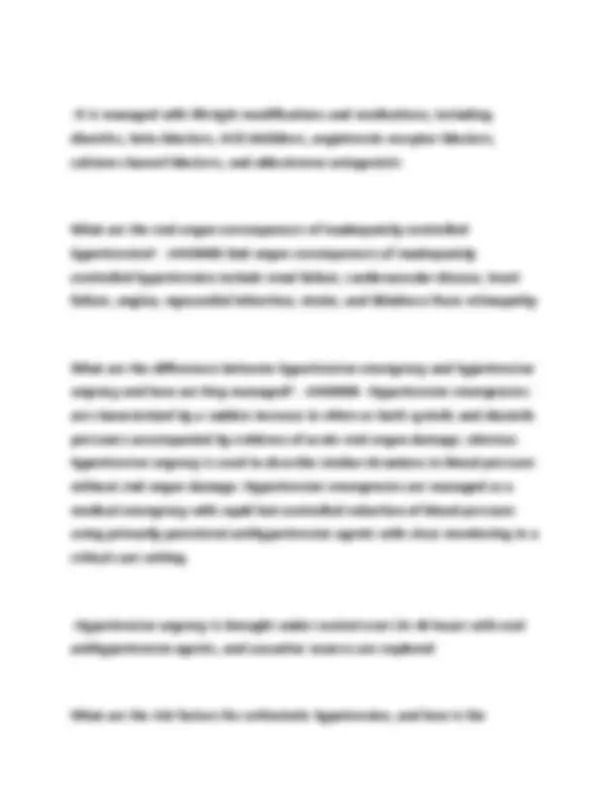
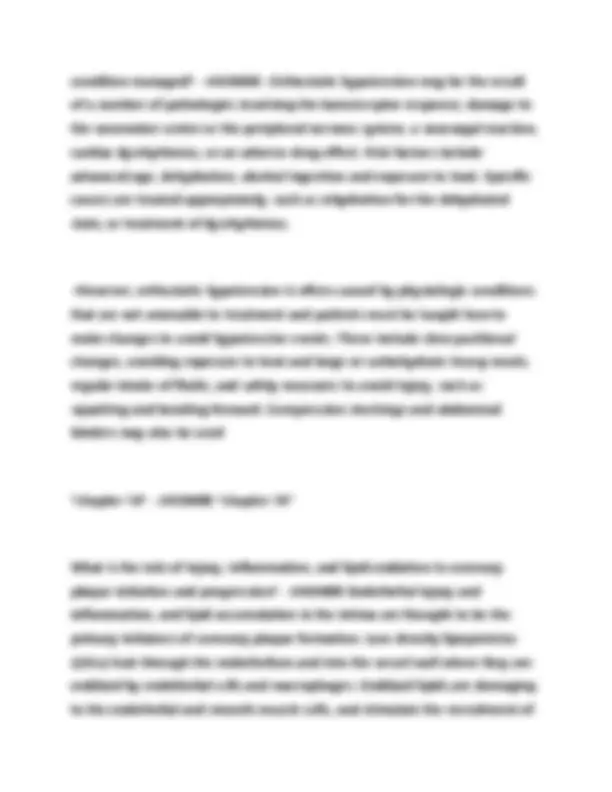
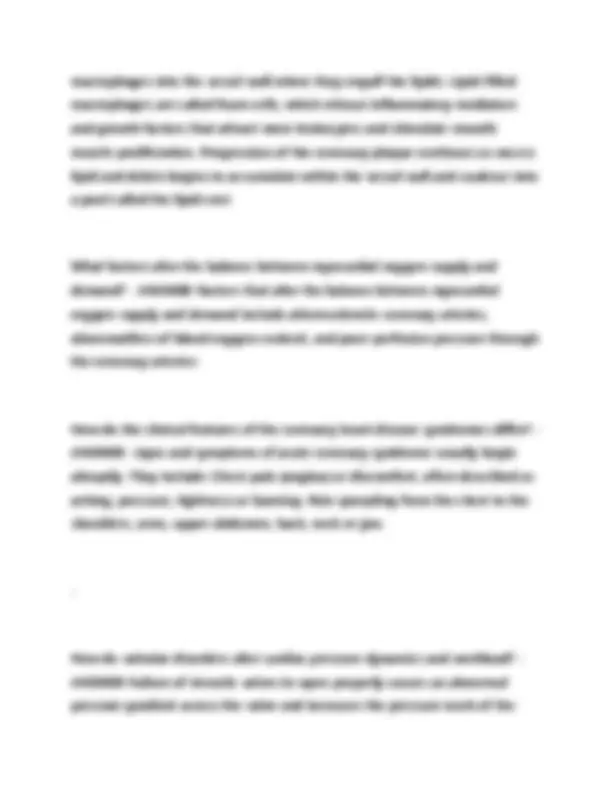
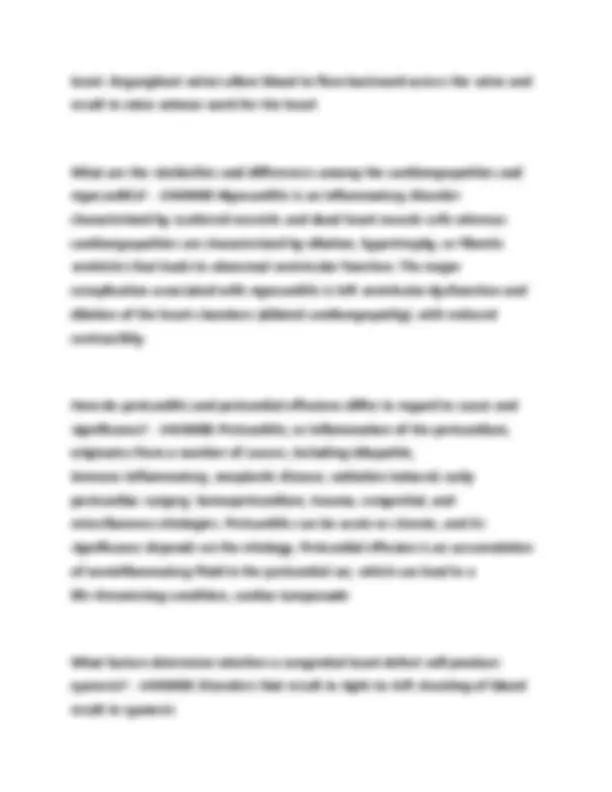



Study with the several resources on Docsity

Earn points by helping other students or get them with a premium plan


Prepare for your exams
Study with the several resources on Docsity

Earn points to download
Earn points by helping other students or get them with a premium plan
Community
Ask the community for help and clear up your study doubts
Discover the best universities in your country according to Docsity users
Free resources
Download our free guides on studying techniques, anxiety management strategies, and thesis advice from Docsity tutors
This comprehensive q&a resource covers fundamental pathophysiology concepts, ideal for students. it explores cell biology, homeostasis, stress response, and disease processes. the questions and answers provide a structured review of key terms, definitions, and mechanisms, facilitating a deeper understanding of the subject matter. particularly useful for students preparing for exams or seeking to reinforce their knowledge of pathophysiology.
Typology: Exams
1 / 44

This page cannot be seen from the preview
Don't miss anything!





































What is anaplasia? - ANSWER Loss of cell differentiation and tissue organization
What is the definition of pathophysiology? - ANSWER (ology) the study of
(pathophysi) abnormalities in physiologic functioning due to disease or injury
What is etiology? - ANSWER The study of the causal factors that provoke a particular disease or injury
Define pathogenesis? - ANSWER A description of how etiologic factors are thought to alter physiologic function and lead to the development of clinical manifestations that are observed in a particular disorder or disease
What are the objective and subjective clinical manifestations of a disease? - ANSWER Objective manifestations: signs found through physical exam or diagnostic tests
Subjective manifestations: symptoms described by the patient
What are the 4 stages of an illness and what do they signify? - ANSWER 1) Latent- the period of incubation before a disease manifests
Prodromal- the first signs of disease appear, often non-specific such as body aches/fever
Acute- period with greatest severity of s/s
Convalescence- recovery
What is a sequela? - ANSWER a condition which is the consequence of a previous disease or injury
What is validity? - ANSWER the degree to which a test measures what it says it measures. the peabody test said it measured intelligence. however, it only tests receptive vocabulary, so that's not valid.
What is accuracy? - ANSWER a measure of how close a measurement comes to the actual or true value of whatever is measured
What is precision? - ANSWER a measure of how close a series of measurements are to one another
What is a positive predictive value? - ANSWER probability that a pt w/ a positive test truly has the disease. The more specific a test, the higher its PPV
prevalence dependent: the higher the disease prevalence, the higher the PPV of the test for that disease
What is negative predictive value? - ANSWER probability that a pt w/ a neg test truly does not have the disease. The more sensitive a test, the higher its NPV.
Prevalence dependent: the lower the disease prevalence, the higher the NPV of the test for that disease
What is sensitivity in a test? - ANSWER -its ability to detect people who do have the disease
= the percentage of the people with a disease that is correctly detected or classified
What is specificity of a test? - ANSWER - its ability to detect people who do
What are the 3 levels of prevention? - ANSWER 1. Primary Prevention
What is primary prevention? - ANSWER designed to prevent , reverse, or arrest a disease process
What is secondary prevention? - ANSWER focuses on identifying the disease early, when it is ASx or mild and implementing measures that can halt of slow disease progression
What is tertiary prevention? - ANSWER Rehabilitative therapies and monitoring of health to prevent complications or further illness, injury, or disability
What is stress? - ANSWER a real or perceived threat to homeostasis
What is homeostasis? - ANSWER the ability to maintain a relatively stable internal environment in an ever-changing outside world
What is allostasis? - ANSWER the ability to successfully adapt to challenges
allo = variable
stasis = stable
What is a homeostatis response? - ANSWER A system whose purpose is specifically meant to normalize a selected physiologic variable
What is the general adaptation syndrome (GAS)? - ANSWER Selye's concept of the body's adaptive response to stress in three phases—alarm (fight or
flight), resistance (return to homeostasis), exhaustion (body is no longer able to return to homeostasis)
What are examples of catecholamines? - ANSWER dopamine, norepinephrine, epinephrine
What do catecholamines do? - ANSWER -Increase Heart Rate
-Increase myocardial contractility
-Peripheral vasoconstriction (toes and fingers; causes blood to go to organs)
-This exhausts the heart
What are adrenocortical steroids? - ANSWER cortisol and aldosterone
What do adrenocortical steroids do during stress response? - ANSWER aldosterone: promotes fluid and volume expansion and increases blood pressure
cortisol: widespread effects that are both synergistic and antagonistic with catecholamines & inflammatory role
What do endorphins & enkephalins do? - ANSWER decrease perception of pain
What do Immune Cytokines do? - ANSWER enhance pain
What are 3 examples of sex hormones? - ANSWER estrogen, testosterone, and dehydroepiandrosterone
What is adaptation? - ANSWER a change or the process of change by which an organism or species becomes better suited to its environment.
What is maladaptation? - ANSWER ineffective, inadequate, or inappropriate
of chromosomes during cell division; organization of microtubules in cytoskeleton
What is the function of the nucleus? - ANSWER Control center of the cell
What is the function of the endoplasmic reticulum? - ANSWER Assembles proteins and lipids
What is the function of the golgi apparatus? - ANSWER -modification
-packaging
-secretion of materials
What is the function of lysosomes & peroxisomes? - ANSWER perform degradative functions
What is the process of atrophy? - ANSWER cell becomes smaller and more energy efficienty (due to starvation or disuse)
What is the function of the mitochondria? - ANSWER powerhouse of the cell
How do cells acquire and use energy? - ANSWER -Energy-requiring reactions within cells are driven by coupling to ATP hydrolysis. Cells acquire energy through catabolism, the energy-releasing breakdown of nutrient sources to provide ATP to the cell.
-Cells use energy in the form of ATP. Each cell must continuously synthesize its own ATP to meet its energy needs. ATP is synthesized primarily from the breakdown of glycogen and fat through glycolysis, the citric acid cycle, and oxidative phosphorylation
How are substances transported across the cell membrane? - ANSWER
lipids diffuse across membrane
ions, glucose, and amino acids go through transmembrane proteins
-ATP-driven pumps
-Carriers
-Channel proteins
-electrochemical gradient (secondary active transport)
How do channel proteins work? What are the 3 types? - ANSWER they form a channel of a particular size and shape which is suitable for a particular ion or molecule to pass through (e.g. aquaporins are channel proteins for water molecules), some channel proteins can open and close depending on the electrical charge across the membrane (e.g. sodium ion channels)
volt-age-gated channels
mechanically gated
ligand-gated
What are the types of carrier proteins? - ANSWER -Na driven carriers
-Passive transport carriers (glucose transporters in B cells of pancrease)
How do carrier proteins work? - ANSWER When certain molecules on the outside of the membrane are needed, the binding site is exposed. The molecules then fill the site and the carrier protein moves to release the molecule into the cell.
How do ATP-driven pumps generally work? - ANSWER -ATP binds to ATP bind site which is an enzyme called ATPase that will hydrolyze ATP into ADP
Atrophy:
Hypertrophy:
Hyperplasia:
Metaplasia:
Dysplasia:
What is atrophy? - ANSWER Atrophy: cell shrink and reduce differentiated function in response to 1) disuse 2) denervation 3) ischemia 4) nutrient starvation 5) interruption of endocrine signals 6) persistent cell injury
What is hypertrophy? - ANSWER increase in cell mass and augmented functional capacity
What is hyperplasia? - ANSWER increase in number of cells
What is metaplasia? - ANSWER a change in stress on an organ that leads to a change in cell type
Most commonly involves a change of one type of surface epithelium to another
*metaplastic cells are better able to handle the new stress
metaplasia occurs via reprogramming of stem cells which then produce the
new cell type
What is dysplasia? - ANSWER Disordered cellular growth
Proliferation of precancerous cells
Often arises from longstanding pathologic hyperplasia or metaplasia
DYSPLASIA IS REVERSIBLE (with alleviation of inciting stress)
If stress persists --> dysplasia progresses to carcinoma (IRREVERSIIBLE)
How are reversible and irreversible cellular injuries differentiated? - ANSWER Irreversible: an injury that is too severe or prolonged to recover from
How do necrosis and apoptosis differ? - ANSWER Necrosis: external injury. Steps of necrosis ischemia --> loss of plasma membranes electrochemical gradient--> influx of calcium ions & mitochondrial dysfunction --> degradation of plasma membrane & nucleur structures
Apoptosis: triggered by intracellular signaling cascades that result in cell death
To what kind of injuries are cells susceptible? - ANSWER ischemia and hypoxic injury, reperfusion injury, nutritional deficits, infectious and
amino acids. Since there are four different bases (cytosine, guanine, adenine, and thymine), there are 64 different possible triplet combinations. Three of the nucleotide triplets, or codons, signal the end of the protein code and do not code for amino acids, while some of the amino acids are specified by more than one codon (pgs. 77-78).
What role do genes play in determining cell structure and function? - ANSWER The presence of structural proteins and enzymes, as well as their relative activity, produce the characteristics of the cell. Genes play a fundamental role in determining cell structure and function by directing the synthesis of proteins and coding for ribonucleic acid (RNA) molecules, which also direct the synthesis of proteins during translation. Many additional molecules are involved in the process of protein synthesis. However, it is the selective expression of genes in particular cells that ultimately determines cell structure and function
How is gene expression regulated? - ANSWER -Cells contain DNA-binding proteins that are able to enhance or inhibit gene expression. These gene regulatory proteins recognize and bind only particular DNA sequences, and thus are specific to the genes they regulate
-Several gene regulatory proteins often bind DNA segments far from the gene they regulate.
By what mechanisms can the cells of an organism, which contain identical genes, become differentiated into divergent cell types? - ANSWER It is the expression of a relatively few tissue-specific genes that results in differences among cell types. Differences in DNA packaging and the combination of gene regulatory proteins passed on during cell division are important mechanisms that lead to the stable expression of tissue-specific genes in particular cell types
What are the general structures and functions of the four main tissue types: epithelial, connective, muscle, and nerve? - ANSWER Epithelial cells adopt a variety of shapes and functions depending on their locations. Stratified epithelium makes up the epidermis of the skin and is primarily protective in function. Simple epithelium, consisting of a single layer of cells, lines the blood vessels and intestines, and forms the kidney tubules, where absorption is its primary function.
Connective tissue includes loose connective tissue, dense or supportive connective tissue, and hematopoietic tissue. Connective tissue commonly functions as a scaffold on which other cells cluster to form organs, holds tissues together, forms an elaborate extracellular matrix which is important in the maintenance of cell differentiation, and plays an important part in the support and repair of tissues and organs.
Muscle tissues include skeletal, cardiac, smooth and myoepithelial tissues, and are specialized for contraction.
How might abnormal meiosis lead to alterations in chromosome number or structure? - ANSWER Nondisjunction (paired homologous chromosomes fail to separate normally
-Aneuploidy-Aberrant Number of Chromosomes, either polysomy or monosomy
Abnormal structure: portions of the chromosome may be lost, attached upside down, or attached to the wrong chromosome,
-Examples include translocation, inversions, deletions, and duplication's
What is the role of the environment in the development of congenital disorders? - ANSWER exposure to teratogen during vulnerable window
-3-9wks very vulnerable because of organogenesis. examples of teratogens include:
-thalidomide, alcohol, anticonvulsants, warfarin, folate antagonists, androgenic hormones, angiotensin-converting enzyme inhibitors, and organic mercury.
-Infectious agents, such as TORCH (toxoplasmosis, others, rubella, cytomegalovirus, herpes)
-radiation
What methods of genetic testing are available? - ANSWER Prenatal genetic testing can be performed on samples from amniocentesis, chorion tissue, or umbilical cord blood. Postnatal genetic analysis is usually done on peripheral blood samples of lymphocytes
What is a phenotype? - ANSWER physical appearance
What is a genotype? - ANSWER genetic makeup of an individual
What are chromatids? - ANSWER one of two identical "sister" parts of a duplicated chromosome
What is a centromere? - ANSWER the point on a chromosome by which it is attached to a spindle fiber during cell division.
What is meiosis? - ANSWER a type of cell division that results in four daughter cells each with half the number of chromosomes of the parent cell, as in the production of gametes and plant spores.
-transplantation of stem cells from bone marrow or peripheral blood
-surgery
-radiation
-drug therapy (chemotherapy)
What is the origin tissue of carcinoma? - ANSWER epithelial
What is the tissue origin of sarcoma? - ANSWER mesenchymal (nerve, bone, muslce)
What are mitogens? - ANSWER extracellular signals that induce mitosis and cell division
What is the Rb gene? - ANSWER tumor suppressor gene
chapters 8 [pp. 147-156] - ANSWER chapters 8 [pp. 147-156]
What are opportunistic infections? - ANSWER infections that strike people whose immune systems are weakened
What factors influence the transmission of infectious agents? - ANSWER
-Reservoir
-portal of exit
-mode of transmission
-portal of entry
-victims susceptibility
How do infectious microorganisms, including bacteria, viruses, fungi, and parasites, differ in structure, life cycle, and infectious processes? - ANSWER -Bacteria: characterized according to shape, reaction to stains, and oxygen requirements
-Virus: small pieces of genetic material, may or may not destroy host cell
-Fungi: can be superficial, subcutaneous, or systemic,
-Parasites: vary depending on organism and site, common sites are skin and GI tract
What conditions compromise host defenses against microorganisms? - ANSWER HIV, malnutrition, diabetes, drugs
Chapter 9 - ANSWER Chapter 9
What are the major organs and cellular components of the body's defense